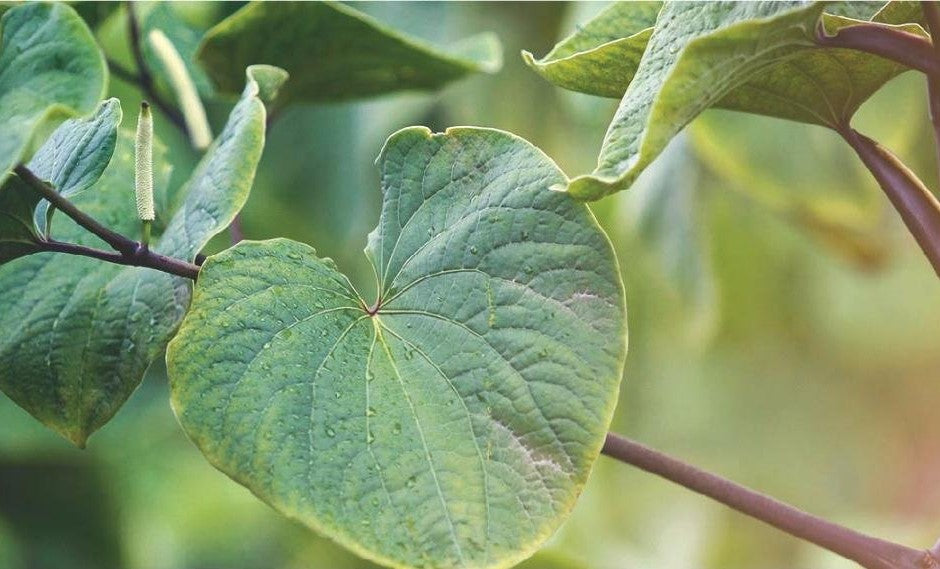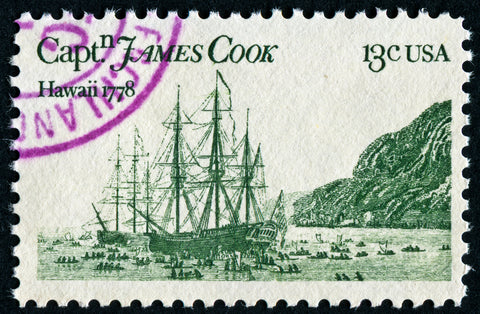
Piper methysticum is better known as the kava plant. This plant is popular due to its kava root, which is used to create kava tea, a drink known around the world for its relaxing effects.
Piper methysticum is found in the South Pacific Islands. Many people know its benefits: sedation, calming, euphoria, happy mood, socialization, better sleep and much more.
Although many are familiar with the benefits of kava, here are ten things you may not know about piper methysticum.
1. It Belongs to the Pepper Family
Some people call piper methysticum the narcotic pepper. Others call it the intoxicating pepper. This happens because the name “piper” is the Latin word for pepper. And methysticum is the Greek work meaning intoxicating.
Although it is in the pepper family, it does not look like a typical jalapeno or bell pepper plant. It has large heart shaped leaves and only the roots are used in making the best kava.
2. The Captain Cook Connection
Upon his travels in Oceana, Captain Cook was the first European to discover the piper methysticum plant. He gave it the name “intoxicating pepper”.
The legends and myths surround the kava plant are just as storied when it comes to the influence Captain Cook had over the introduction of kava to the rest of the world. Claims that Cook and his missionaries loathed the preparation process but loved the socialization kava brings among users.
Other claims indicate Cook and his missionaries appreciated the entire kava culture and immersed themselves in it. Either way, it is evident Captain Cook had a direct connection with piper methysticum.

3. It’s Used in Cosmetics
Kava not only has benefits that are mental and physical. In fact, the piper methysticum plant also has benefits for use in cosmetics. Companies recognize kava has antiseptic properties and is popular for treating stress. They have found ways to mix kava into their products, so consumers can enjoy it in other ways than drinking the tea.
Kava is said to have anti-aging benefits. Because it reduces stress, gives you an euphoric and happy feeling, kava is being added to many different beauty products. Stress, digestion problems, depression and anxiety can all lead to aging.
4. It Can Be Smoked
Yep, the root can be smoked, just like many other plant based products. Even though it is not the most recommended way to consume kava, it can be done. Some people mix kava with other herbal products and smoke them together.
And for those who aren’t interested in smoking piper methysticum, you can still mix it with other great herbs to create a tea with super powers.
5. Doesn’t Need to Be Mixed with Other Herbs
Kava is effective on its own and doesn’t really need to be mixed with anything. It is a great herb all by itself, offering many positive effects.
However, if you want to mix kava with other herbs, you must first determine what desire you hope to achieve.
You must be sure you are mixing synergistic herbs and not herbs that will cause a negative reaction. It would be best to work with an herbalist or buy products that have already been prepared together and then packaged for distribution.
6. It’s a Phytomedicine
Phytomedicine is another way to describe alternative, therapeutic herbal treatments, and the use of herbal treatments over traditional medicines to improve symptoms of physical and mental problems.
When you get ill, you have options for treatment. One is the most widely used, seeking help from a physician who typically prescribes synthetic medicine. Most of which have their own side effects.
Phytomedicine is a second option. The treatment prescription involves the use of botanical herbs. Herbalists can help you find a solution to your illness. They believe the body can heal itself and with natural herbs, you can both heal and enhance your body’s healing abilities.

7. Six Major Ingredients
You would think kava would be the only natural ingredient in kava, right? Well, to everyone’s surprise, there are six major ingredients in all-natural kava.
The main ingredients in kava are called kavalactones. There are several strands of kavalactones involved in creating kava. Because of this, the order in which the kavalactones are extracted will determine the affects you receive.
Kava is also made of water, starch, dietary fiber, sugars, proteins and minerals.
8. Smells Good, Tastes Bad
Many reports discuss the taste of kava, and it is not favorable. Many try to chase it a flavored drink, or mix it in candy or food. Basically, people say it takes just like what it is, a root from below the dirt.
Its smell, on the other hand, has been compared to that of lilacs.
9. Has Been Controversial
There has been a bogus controversy surrounding kava for years, leading to it being banned for export for a long time. Finally, governments have realized the truth and have since removed the ban.
A handful of people claimed drinking kava resulted in them having liver problems such as toxicity. However, these few claims were later found to be untrue and were related to people drinking ignoble or bad kava, not noble kava.
Even if the reports had been true, that would give kava an extraordinary track record. Over 3,000 years, only around twenty people had a negative reaction.
This would be the complete opposite of prescription medications that are prescribed daily to patients around the world, and that are killing millions of people every year. Yet those medicines are never banned.
10. Heady vs. Heavy
People who drink kava explain they often feel heady or heavy effects. These will be different for each individual drinking kava.
Heady effects relate to the euphoric and cheerful affects you feel in the first hour of drinking kava. The effects are in your head, hence the term “heady”. They are mental effects, usually including alertness and clarity.
Heavy effects relate to every other feeling you get outside of the head. It’s how your body feels after drinking kava, mainly relaxed and calm.
The best kava will have a balance of both heavy and heady.
Now that you know more about piper methysticum and kava tea, you know just how beneficial it can be.
